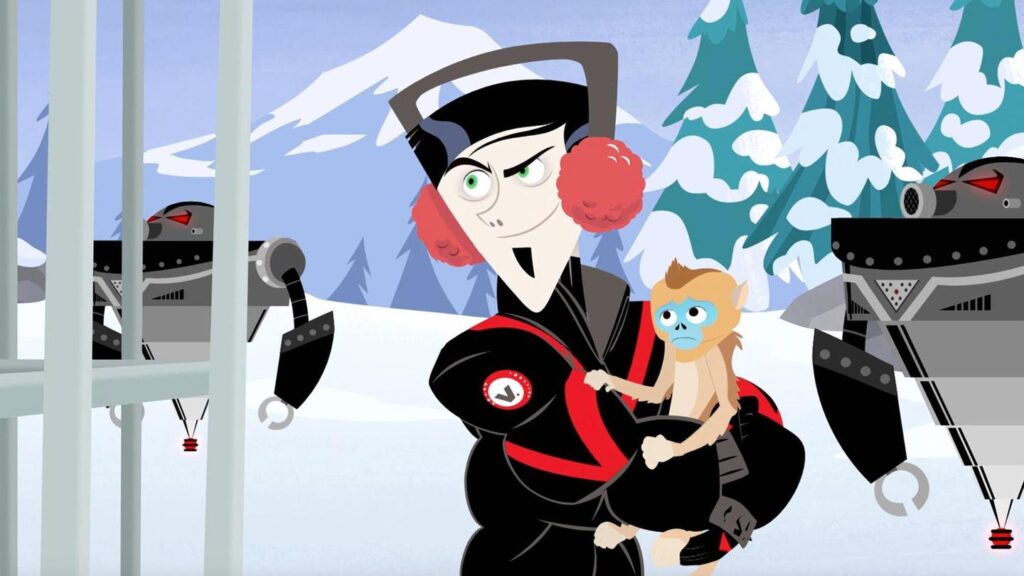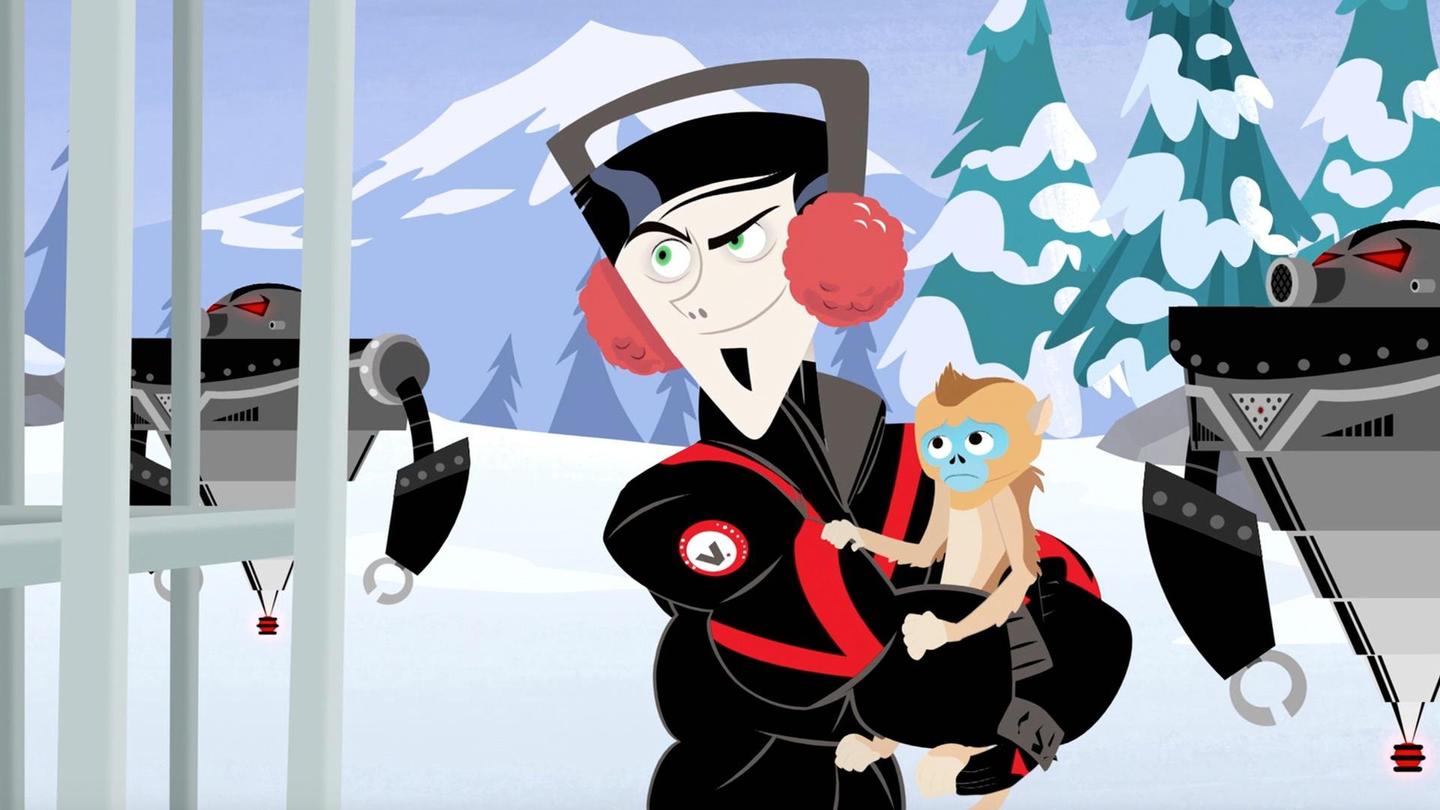
A Comprehensive Guide to All Wild Kratts Villains: Threats to the Creature World
Wild Kratts, the popular children’s animated series, captivates audiences with its blend of wildlife education and thrilling adventures. At the heart of these adventures are the Wild Kratts villains, each posing unique threats to the animal kingdom. Understanding these antagonists provides valuable insights into the show’s conservation message and the real-world challenges facing wildlife. This guide offers a comprehensive overview of all significant Wild Kratts villains, exploring their motivations, methods, and the lessons they teach about environmental responsibility.
Zach Varmitech: The Tech-Savvy Menace
Zach Varmitech, often considered the primary antagonist of Wild Kratts, is a technological genius driven by greed and a desire for power. He represents the dangers of unchecked technological advancement and the exploitation of nature for personal gain. His inventions, while impressive, are invariably used to capture and control animals, disrupting ecosystems and endangering species. Zach’s character serves as a cautionary tale about the ethical responsibilities that come with technological innovation.
Zach’s Modus Operandi
- Technological Trapping: Zach frequently utilizes his inventions to trap creatures, modifying them for his purposes.
- Creature Power Suit Theft: He constantly attempts to steal the Kratt brothers’ Creature Power Suits, hoping to harness their abilities for his own schemes.
- Environmental Disruption: Zach’s projects often lead to the destruction of habitats and the displacement of animals.
The Impact of Zach Varmitech
Zach’s actions highlight the importance of sustainable practices and the potential consequences of prioritizing profit over environmental well-being. His repeated failures underscore the effectiveness of teamwork, knowledge, and respect for nature in overcoming even the most technologically advanced threats. Learning about Wild Kratts villains like Zach helps children understand the value of conservation.
Gourmand: The Culinary Connoisseur of Endangered Species
Gourmand is another significant Wild Kratts villain, distinguished by his insatiable appetite for rare and endangered animals. He embodies the threat of overconsumption and the devastating impact of the exotic food trade on vulnerable species. His character emphasizes the importance of responsible eating habits and the need to protect endangered animals from exploitation.
Gourmand’s Gastronomic Obsessions
- Hunting Endangered Species: Gourmand actively seeks out rare and endangered animals to satisfy his culinary desires.
- Creating Exotic Dishes: He concocts elaborate dishes using these animals, showcasing a complete disregard for their conservation status.
- Promoting Unsustainable Consumption: Gourmand’s actions normalize the consumption of endangered species, contributing to the demand that drives their extinction.
The Ethical Implications of Gourmand
Gourmand’s villainy underscores the ethical implications of our food choices and the responsibility we have to protect vulnerable species. His defeat reinforces the message that conservation efforts and sustainable practices are essential for preserving biodiversity. Knowing about Wild Kratts villains like Gourmand can encourage viewers to make informed choices about what they eat and to support conservation initiatives. The Wild Kratts villains serve as constant reminders of the real threats to wildlife.
Donita Donata: The Fashion-Forward Foe
Donita Donata, a fashion designer with a penchant for using live animals as accessories, represents the dangers of vanity and the exploitation of animals for aesthetic purposes. She embodies the ethical concerns surrounding the fashion industry and the need for cruelty-free alternatives. Her character highlights the importance of considering the welfare of animals in all aspects of our lives, including fashion.
Donita’s Deplorable Designs
- Freezing Animals into Statues: Donita uses a special device to freeze animals into living statues, which she then uses as fashion accessories.
- Exploiting Animals for Vanity: Her actions demonstrate a complete disregard for the well-being of the animals, prioritizing her own aesthetic desires above their lives.
- Promoting Unethical Fashion Practices: Donita’s behavior normalizes the exploitation of animals in the fashion industry, contributing to the demand for products made from endangered or mistreated species.
The Message Behind Donita Donata
Donita’s villainy serves as a powerful message about the ethical responsibilities of consumers and the need to support sustainable and cruelty-free fashion practices. Her defeat reinforces the idea that true beauty lies in respecting and protecting animals, not in exploiting them. The presence of Wild Kratts villains like Donita provides an opportunity to discuss the importance of ethical consumerism with children. Understanding these Wild Kratts villains is key to appreciating the show’s conservation message.
Paisley Paver: The Habitat-Destroying Developer
Paisley Paver is a ruthless real estate developer who prioritizes profit over environmental preservation. She represents the threat of habitat destruction and the devastating impact of urban sprawl on wildlife. Her character emphasizes the importance of responsible land use planning and the need to protect natural habitats. Paisley Paver is another of the notable Wild Kratts villains that the Kratt brothers must contend with.
Paisley’s Destructive Development Plans
- Habitat Destruction: Paisley clears forests, wetlands, and other natural habitats to make way for her development projects.
- Displacement of Animals: Her actions displace animals, forcing them to find new homes or face starvation and death.
- Ignoring Environmental Regulations: Paisley often disregards environmental regulations in her pursuit of profit, further exacerbating the negative impact of her developments.
The Importance of Habitat Preservation
Paisley’s villainy highlights the importance of protecting natural habitats and the need for sustainable development practices. Her defeat reinforces the idea that economic progress should not come at the expense of environmental well-being. The Wild Kratts villains often embody real-world threats. Educating children about Wild Kratts villains like Paisley Paver can inspire them to become advocates for habitat preservation. These Wild Kratts villains present relatable scenarios.
The Common Thread: Exploitation and Disregard
While each Wild Kratts villain has their unique motivations and methods, they share a common thread: a disregard for the well-being of animals and the environment. Whether driven by greed, vanity, or culinary obsession, these antagonists prioritize their own desires over the needs of the natural world. By showcasing the consequences of their actions, Wild Kratts teaches children valuable lessons about environmental responsibility and the importance of conservation.
Lessons Learned from the Wild Kratts Villains
The Wild Kratts villains serve as powerful reminders of the real-world threats facing wildlife. By understanding their motivations and methods, viewers can gain a deeper appreciation for the importance of conservation efforts. Here are some key lessons that can be learned from these antagonists:
- The Importance of Sustainability: Zach Varmitech’s technological schemes highlight the need for sustainable practices and the ethical considerations of technological advancement.
- The Ethical Implications of Consumption: Gourmand’s culinary obsessions underscore the ethical implications of our food choices and the responsibility we have to protect endangered species.
- The Value of Compassion: Donita Donata’s vanity emphasizes the importance of compassion for animals and the need for cruelty-free alternatives in fashion and other industries.
- The Need for Habitat Preservation: Paisley Paver’s destructive development plans highlight the importance of protecting natural habitats and the need for responsible land use planning.
Conclusion: Empowering Future Conservationists
The Wild Kratts villains play a crucial role in the show’s educational mission. By presenting relatable antagonists who embody real-world threats to wildlife, Wild Kratts empowers children to become informed and engaged conservationists. Understanding the motivations and methods of these villains is essential for appreciating the importance of environmental responsibility and the need to protect the creature world. The Wild Kratts villains are a vital part of the show’s message. Ultimately, Wild Kratts encourages viewers to take action and become stewards of the planet, ensuring a sustainable future for all. The Wild Kratts villains and heroes alike, drive home the importance of conservation.
[See also: Wild Kratts Creature Power Suits: A Comprehensive Guide]
[See also: The Wild Kratts Team: Meet the Members]
[See also: Educational Value of Wild Kratts: Learning Through Adventure]

